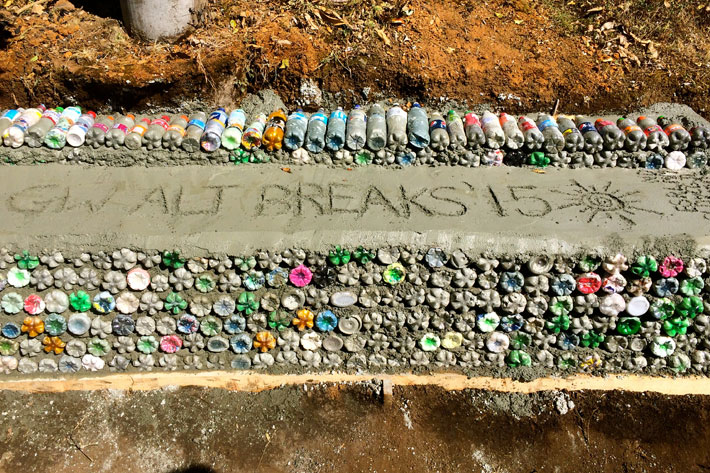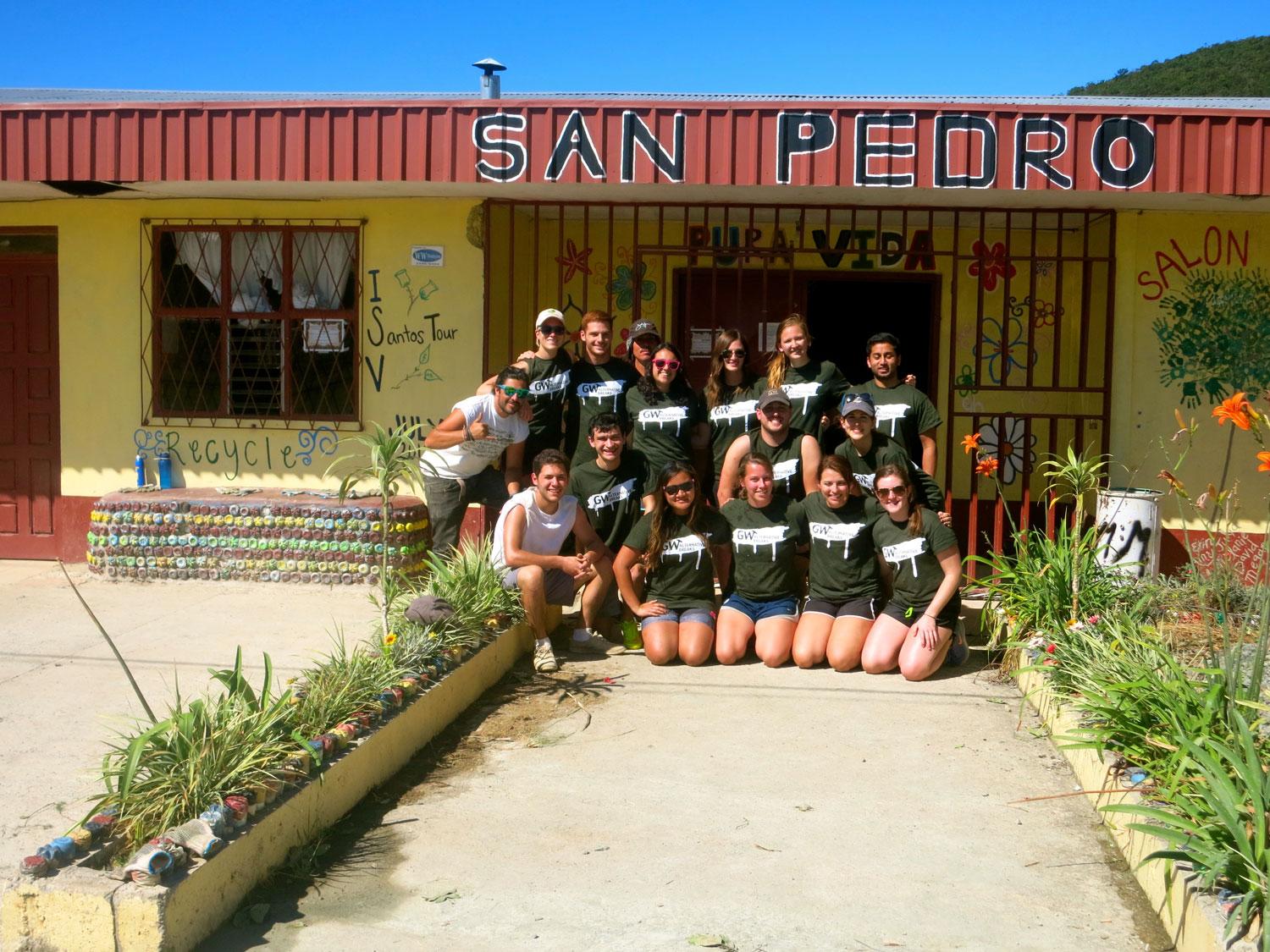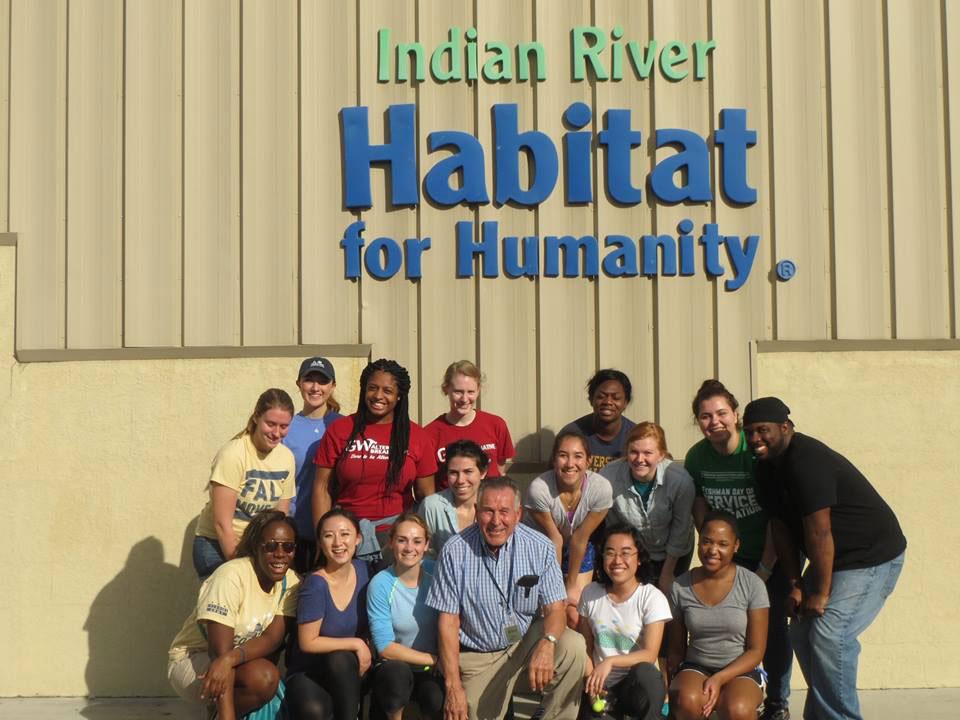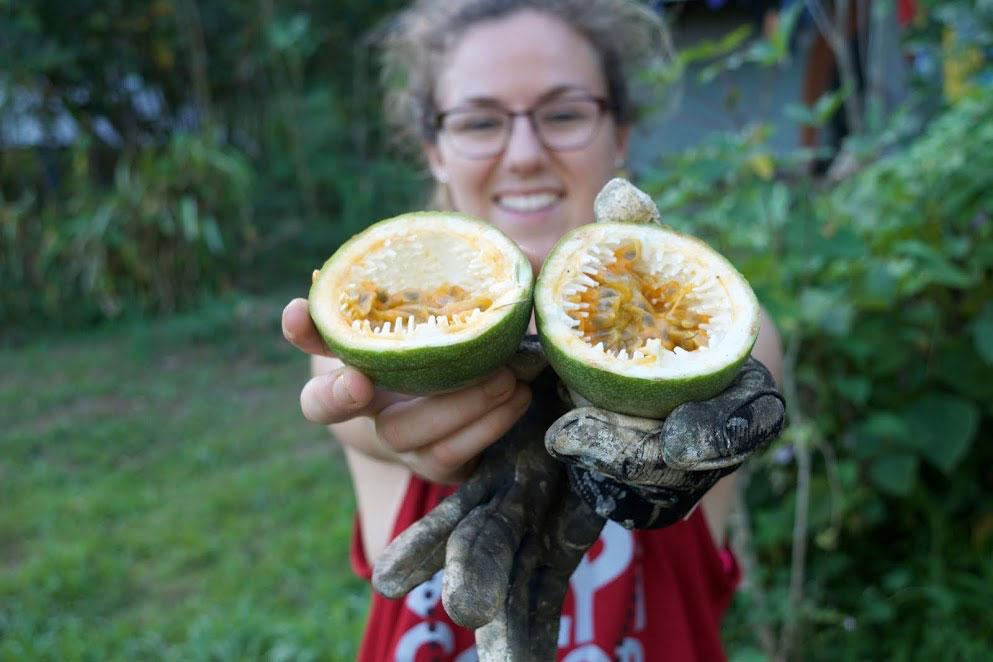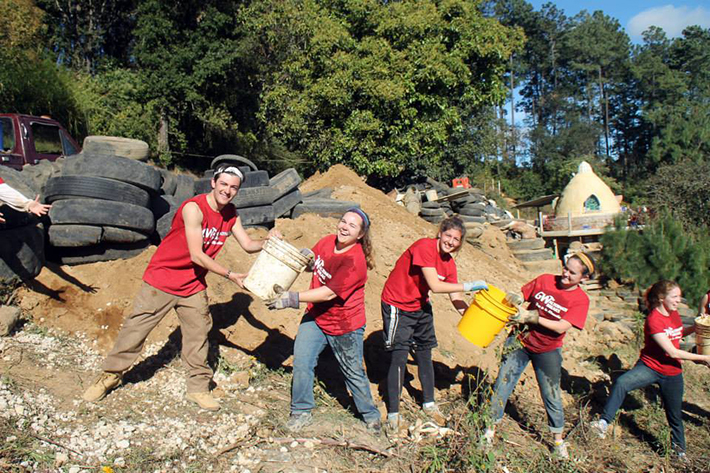By James Irwin
The first thing you notice about the eco-bricks is the color. Plastic bottles of assorted tints, each crammed with recycled material—potato chip bags, pieces of plastic—sit atop a layer of cement in a neat row, arranged together like a soft-drink variety pack on a conveyor belt.
Then comes a second layer of cement, applied over the bottles. Another row of plastic, another layer of cement. Gravel, rocks, dirt and sand are packed into the crevices between the bottles. Eventually the bricks take shape, becoming benches, trash cans, even interior or exterior walls of buildings.
It is a rudimentary engineering project, and at the same time it’s a cost-effective and environmentally friendly way to build, said Emma Vitaliano, a graduate student in the Trachtenberg School of Public Policy and Public Administration and co-leader of a George Washington University Winter Alternative Breaks trip to Los Santos, Costa Rica.
Recycling plants in the area, she said, aren’t very efficient, so using the bottles in another way helps cut down on pollution and wasted water. And the mix of plastic, dirt and other materials reduces the amount of cement needed for projects. The eco-bricks are a wildly popular method of construction in Latin America.
“It’s more than 25 percent less cement,” said Ms. Vitaliano, who, along with 13 other GW volunteers, helped build a bench out of eco-bricks (among other projects) during their weeklong service trip. “You see eco-bricks all over the Los Santos area. It’s mainly, for them, a socio-economic development project.”
About 175 students, faculty and staff tackled issues of sustainability, community health, housing, poverty, education and urban restoration on service trips to U.S. and Latin American communities last week. GW volunteers amassed nearly 7,000 hours of service in Costa Rica, Guatemala, Indian River County (Florida), Los Angeles, New Orleans, Nicaragua and Puerto Rico.
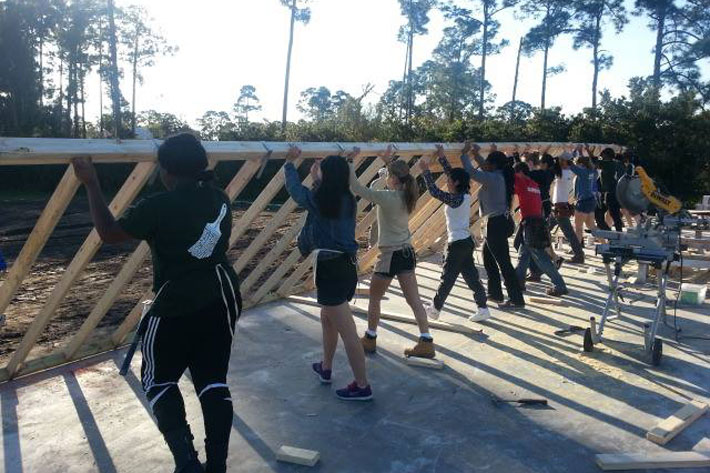
GW volunteers in Indian River County (Florida) lift the framework of a house into position during their service project with Habitat for Humanity. (Maurice Smith)
Six of the seven sites were return visits for GW, including the trip to Costa Rica, where volunteers built a sidewalk and explored organic farming techniques on a trip focused on sustainability and community health.
“Things we take for granted here are things that are very important in communities like Los Santos,” Ms. Vitaliano said. “We had discussions about the ways we waste water here and ways we can save it, like turning off the water while you brush your teeth. So in serving we’re also becoming more aware of how our everyday routine fits into a greater context of things.”
Volunteers in El Manzano Uno, Nicaragua, including Elliott School of International Affairs junior Lauren Lamb, spent the week working on school construction projects. On previous trips to the town, GW volunteers built a community high school. Making her second trip to Nicaragua with Alternative Breaks, Ms. Lamb and her group of volunteers toured the recently completed facility and worked on two nearby elementary schools, constructing a playground area for one and ripping up old flooring and putting down new tile in another.
“We had gone to visit one of the schools the year before, and it was basically falling apart, so it was cool to see how much had been accomplished in a year, even though more work needs to be done,” she said. “We were able to spend some time at the finished high school and visit with the students—see the library, the greenhouse. It’s really cool to see the kids grow up year after year.”
The trips, she and Ms. Vitaliano said, were filled with valuable lessons in addition to the hours of hard work.
“I like how well-balanced it is,” Ms. Vitaliano said. “We’re not just doing service without realizing why we’re doing it. I think that’s important for the people on the trip. We’re learning why exploring ideas of sustainability is important for our own lives.”


